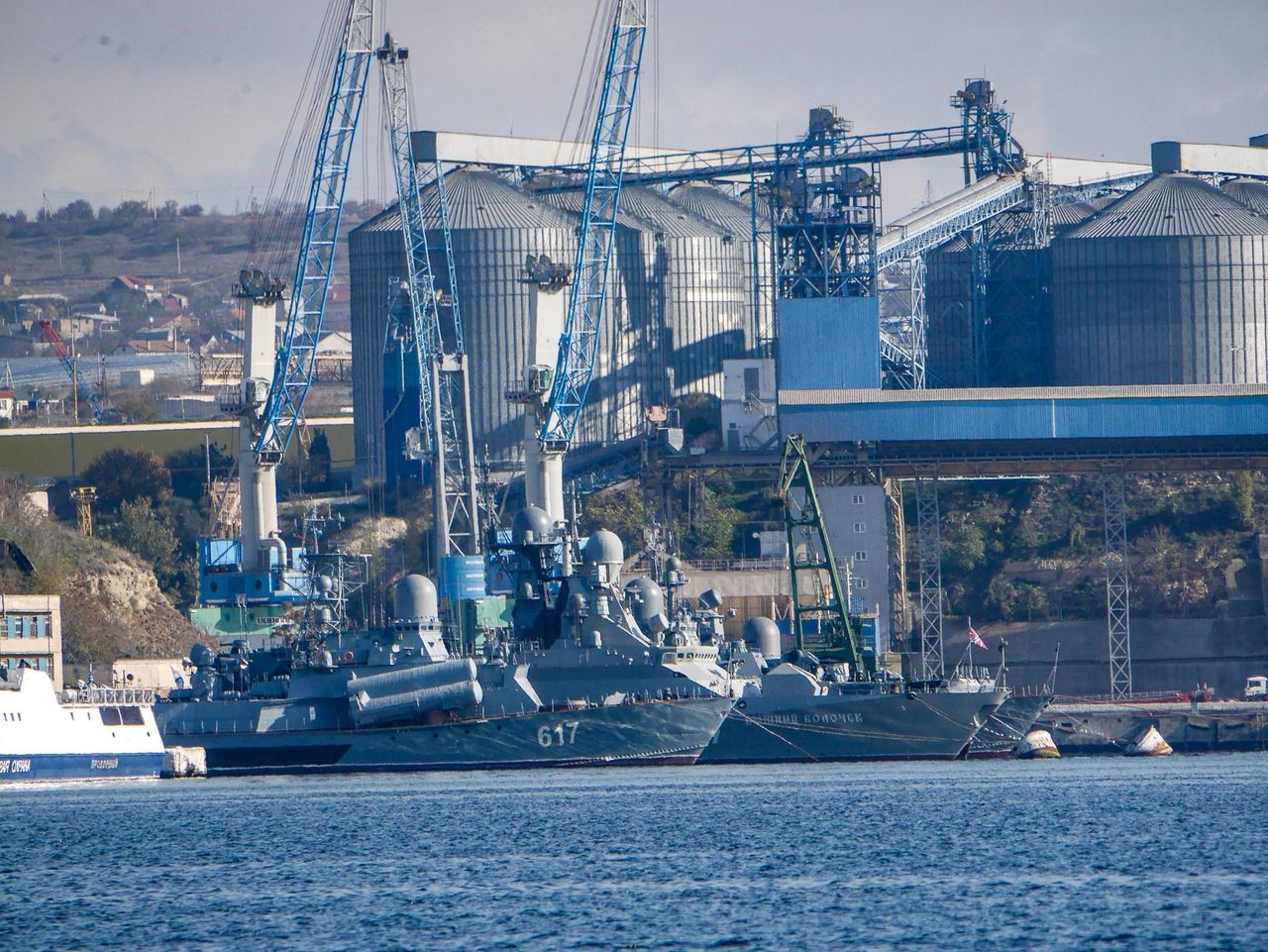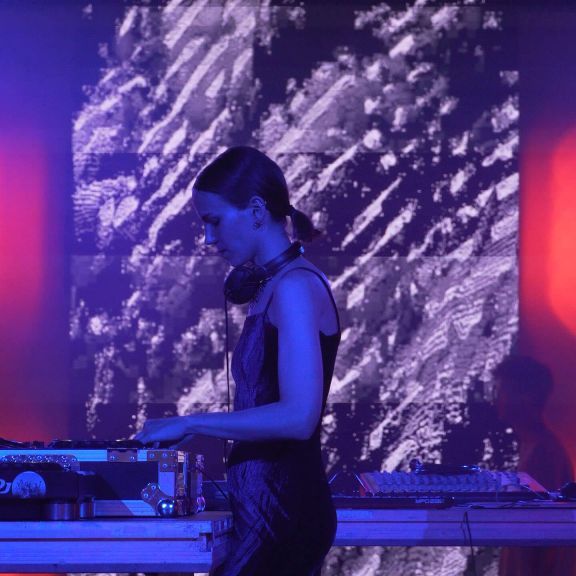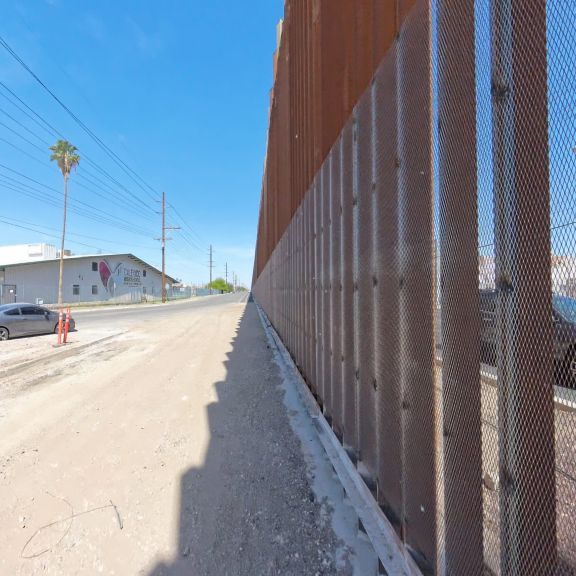
Martial law was imposed in 10 Oblasts of Ukraine. That is the response of President Petro Poroshenko and the Ukrainian parliament to the Russian attack on Ukrainian ships on November 25. They were fired on, 24 sailors were imprisoned. Six of them were wounded. However, the Ukrainian martial law does not resemble the Polish one in December 1981.
It takes two hours and 20 minutes’ drive from Kyiv to Vinnytsia. The Vinnytsia Oblast is one of those where martial law was imposed – it is on the list because it borders with the region of Transnistria. Russian soldiers are stationed there.
However, those who are looking for tanks, armoured personnel carriers and patrols of soldiers in the streets of the city will be disappointed. People live in their normal rhythm. On Tuesday, November 27, everything worked the same as before the imposition of martial law.
Anyway, martial law is to last only 30 days but when it started? That is the question. Initially, the President’s decree indicated the date of November 26. However, the imposition of martial law was passed by the parliament on Monday evening, and so the new date appeared: November 28th. And then President Poroshenko informed that martial law has been in force since November 26. The confusion was also caused by the “Official Monitor”, which published an old variant of the decree, referring to the introduction of martial law for 60 days. Finally, the “Holos Ukrayiny”, the official newspaper of the Verkhovna Rada, published the President’s decree on the imposition of martial law on November 28, which was equivalent to its beginning.
When it comes to applying the norms of martial law, there are even more controversies and question marks. Ukraine has never imposed a state of martial law before.
People started asking questions. Why wasn’t martial law imposed earlier? In spring 2014, Russia annexed Crimea, then the war broke out in the Donbas, and it continues. Poroshenko’s critics have repeatedly accused him of lack of decisiveness and criticised him for not introducing martial law earlier. What has changed?

One day at sea, which changed the history of Ukraine
It all began
A significant deterioration of the situation happened in the Azov Sea in April 2018. The Russian side began to stop and control ships passing through the Kerch Strait and heading for Ukrainian ports or sailing from Ukraine. Only from April to August 2018, Russians have stopped more than 150 ships.
Kyiv began to talk about the economic blockade of Ukrainian ports imposed by Russia. However, the beginning of the conflict in the Azov Sea should be sought much deeper. When Ukraine officially declared itself an independent state, one of the main problems in relations with Russia was the demarcation of the borders between these two countries, including the regulation of the maritime areas.
The dispute was intensified in 2003. In September, Russian workers began to build a causeway from the Taman Peninsula (Krasnodar Krai) towards the small Tuzla Island belonging to Ukraine, located in the Kerch Strait. The dispute was intensified in 2003. In September, Russian workers began to build a causeway from the Taman Peninsula (Krasnodar Krai) towards the small Tuzla Island belonging to Ukraine, located in the Kerch Strait. The Russian side believed that Tuzla was not an island but a part of a sandy islet in the form of a spit. In fact, in 1925, Tuzla naturally disconnected from the narrow spit, which was an extension of the Taman Peninsula.
In response, Ukraine sent some troops to the waters around the island. The Russian workers stopped working only about 100 metres in front of Ukrainian soldiers’ raft. Kyiv formed a permanent post of border guards in Tuzla. In December 2003, Russia managed to force Ukraine to sign an agreement describing the terms of use of the Azov Sea. It included a provision saying that it is a historically internal sea of Russia and Ukraine. Simultaneously, it was decided that a separate contract should mark the border on the Azov Sea. Talks lasted for many years, but the agreement was not reached, and Tuzla, was annexed along with Crimea in 2014. It became the foundation for the Crimean Bridge.

In 2014, Mariupol – a large industrial and port centre on the north coast of the Azov Sea – found itself almost on the front line. At the end of August, the fighters supported by Russia moved towards the city. Authorities in Kyiv have alarmed that Russia wants to seal off Ukraine from the sea by breaking through a corridor in the direction of Crimea and then Transnistria. Eventually, the front line stopped about 20 km from Mariupol. Nevertheless, the threat remained.
Russia strengthened its naval forces in the Azov Sea. Due to the tense situation, Ukraine decided to do the same. On September 23, 2018, two ships of the Ukrainian Navy sailed across under the Crimean Bridge.
On November 25, further Ukrainian ships wanted to sail across under the bridge, but it ended utterly different. The Ukrainian Naval Forces state its units operated according to procedures. On Sunday morning, however, Russian traffic controllers in the ports of Kerch and the Caucasus, located on both sides of the Kerch Strait, did not respond to the calls of Ukrainian ships.
In turn, the Russian side says that three Ukrainian naval ships violated the UN Convention on the Law of the Sea – ” illegally entered the temporarily closed water area of Russia’s territorial waters” and crossed Russia’s border.
Russian boats of frontier guard swum up to the Ukrainian vessels and called them to stop. The Russian frontier guard ship “Don” rammed the Ukrainian tugboat and seriously damaged it. The situation was exacerbating. At the same time, Russia sent two military helicopters and ultimately closed the traffic through the Kerch Strait. Even civilian ships could not sail through. After 1 pm. it appeared that a ship was towed and left on the shallows to block the entrance from the side of the Azov Sea in front of the Crimean Bridge, which meant blocking the passage through the strait.
Ukrainian ships were waiting for the passage to the evening. At 7 pm. it was decided to leave the Kerch Bay and return to Odessa. Russian vessels – six frontier guard worships and two ships of the Black Sea Fleet – started to chase the Ukrainian ships.
After 8 pm Russian ships opened fire on Ukrainian vessels. The high command of the Ukrainian Naval Forces underlines it happened on neutral waters after the Ukrainians had left the 12-mile zone of the Russian territorial waters.
The Russian FSB special forces have boarded Ukrainian ships, capturing 24 seamen – as it turned out, six of them were injured as a result of shelling.
President Poroshenko convened the War Cabinet at 10 pm. At the same time, a defence alert was announced for the entire Ukrainian Naval Forces. At midnight there was a meeting of The National Security and Defence Council of Ukraine. President Poroshenko asked the Verkhovna Rada to impose the martial law at its meeting scheduled for November 26.

Crimean Bridge (photo by Piotr Andrusieczko)
The political battle
On Monday, November 26, at 4 pm. an emergency session of the Verkhovna Rada of Ukraine was convened. The atmosphere was tense – some of the factions, supporting the imposition of martial law, were reporting their own demands at the same time. According to “Ukrayinska Pravda”, People’s Front, the main ally of the Petro Poroshenko Block “Solidarity” demanded to shorten martial law from 60 to 30 days with the possibility of extending, imposing it in some selected parts of the country and keeping March 31 as the date of the presidential elections. This demand was supported by the All Ukrainian Union “Fatherland” of Yulia Tymoshenko and the Radical Party of Oleh Lyashko. President Poroshenko, being under pressure, declared martial law lasting 30 days. During his parliamentary speech before the vote, he also declared that he was applying for a limitation of martial law to 10 regions. Two hundred seventy-six deputies supported the president. At the same time, the chairman of the parliament put to the vote the appointment of the presidential election date on March 31, 2019 – two hundred ninety-eight deputies voted in favour of it.
Martial law four and a half years after the start of the war effort
Since the start of the presidency by Petro Poroshenko in May 2014, his critics demanded the introduction of martial law. Especially that Kiev often underlined Russian aggression in Ukraine.
During the annexation of Crimea, Russia did not admit for a long time that the “little green men” are regular soldiers of the Russian army. In Donbas, Russia played a game titled “We are not there”. However, Kiev got evidence for the supply of arms and ammunition from Russia and the participation of soldiers of the Russian army in at least two major battles: the battle of Ilovaisk in August 2014 and the battle of Debaltseve in January and February 2015. The Bellingcat website, which deals with journalistic investigations in conflict areas, published evidence of artillery firing Ukrainian units carried out from the territory of Russia. Russian soldiers were taken as prisoners, but in response, one could hear they fought in the Donbas as volunteers and that they had earlier relieved themselves off duty.
The November 25 events were of an entirely different nature – for the first time the Russian units attacked the Armed Forces of Ukraine openly, under the state flag.
Might the sending of Ukrainian warships through the Kerch Strait be understood as a Ukrainian provocation? In a way, it was part of the Kiev strategy to alert international opinion about the crisis in the Azov Sea. Nevertheless, two Ukrainian warships sailed through the Kerch Strait without any significant problems at the end of September. In turn, the Ukrainian Navy units heading to the port of Berdyansk on November 25 were hardly a threat to the Russian forces.
President Poroshenko had to react to the crisis. The answer was the introduction of martial law. Some voices immediately appeared, that Poroshenko wants to influence the next presidential election. Martial law lasting 60 days would mean postponing the vote scheduled for the end of March. However, it did not happen.
Poroshenko’s political image is based, among others, on the slogans of patriotism, a strong army and security, so the patriotic electorate would not have understood the lack of a particular reaction to the Russian attack. By imposing martial law, the president to some extent took the wind out of the sails of political opposition, who earlier criticised him.
It is true that Poroshenko could not have been glad about the recent election polls. His rival Yulia Tymoshenko is the leader of the rankings. What is worse, an actor Volodymyr Zelenskiy has gained almost the same support as the current president.
Now Poroshenko gets a chance to gain some points in the eyes of the electorate by showing himself as a defender of the country and an influential politician. It will take some time to show the impact of martial law on the president’s ratings in the surveys. Right now, opposition’s hands are tied, but the representatives of Tymoshenko party have already announced the readiness to watch the activities of Poroshenko closely during martial law.

What does martial law really mean?
First of all, the president promised the authorities would limit civil rights only in the case of Russia military aggression. Therefore, no curfew was introduced like during martial law in Poland. No general conscription has been announced, but conscription plans in case of aggression will be refined. The reservists can also be called up to undergo military exercises.
The Armed Forces of Ukraine are to be in full fighting readiness. The border control will be strengthened, which may affect citizens of Russia entering Ukraine – they will be subjected to more thorough inspection. On November 26, it appeared that the State Border Guard Service of Ukraine did not let in about 70 Russians – mostly because they could not justify the purpose of their visit.
The police, the State Border Guard Service of Ukraine and the National Guard of Ukraine are to perform their duties on a higher level of readiness. However, most citizens of Ukraine probably will not even pay attention to the increased number of patrols. The war has lasted for four years, and people got used to additional law enforcement on the streets in connection with various events.
The protection of transport infrastructure will be strengthened, especially airports, ports, railway and bus stations. The Ukrainian Railways will draw up a particular timetable where the transport of important cargo connected with national defence will have a priority. However, the changes should not affect ordinary passengers.
While the presidential election was scheduled for March 31, the official election campaign should start on December 31, after the end of martial law. However, local elections will not take place on December 23 (following the administrative and territorial reform) in those districts where martial law was introduced. When the martial law comes to an end, the Verkhovna Rada should set a new date of local elections.
The Ministry of Healthcare of Ukraine has designated medical facilities which, if necessary, will serve the army. Just in case, additional places in hospitals and supplies of pharmaceutical preparations for the needs of the military were created.
The General Staff of the Armed Forces of Ukraine asks not to take photos of military technology and the movement of military units. It is also forbidden to photograph and film military objects.
The local authorities introduced some additional restrictions in the Oblasts where martial law was imposed.
And what about sailors?
Russian courts in the Crimea arrested all detained Ukrainians for two months. They are accused of illegal crossing the border of the Russian Federation with the use of force or the threat of its use. They are threatened with up to six years in prison.
Kyiv underlines the Crimean coastal waters cannot be considered as a Russian border unless the international community recognised the annexation of Crimea. Ukraine also demands to treat sailors as prisoners of war.
Crimean Tatar lawyers decided to defend the sailors on the spot. Other Crimean Tatars also wanted to help and raised 140.000 roubles, food and hygiene measures. Money is also spontaneously raised in Ukraine.
It is possible that Turkey will become a mediator in the Ukrainian-Russian conflict in the Gulf of Kerch.
Meanwhile, despite the martial law, on November 28 in Odessa a group of 30 masked men attacked Anatoliy Hrytsenko, the presidential candidate, just before the meeting with his supporters. A few people were injured.






















